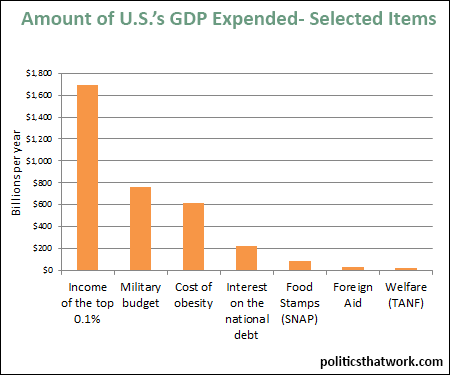
Description: This graph represents the amount of the U.S.'s GDP that is dedicated to various categories of costs from the income collected by the top 0.1% to the direct and indirect costs created by obesity to TANF.
Sources: Pew Forbes About.com Washington Post HHS Mulbrandon National Priorities/USAID
Last updated: January 28, 2015





